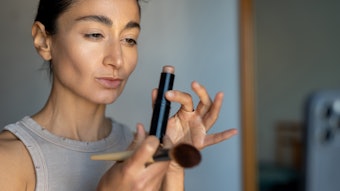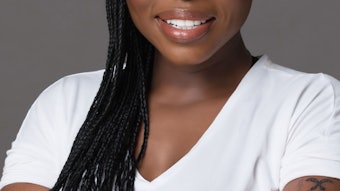Technology is changing the landscape of the world—how we read books, spend time with friends and family, go to work, interact with other people—nearly everything in today’s world. But how much can technology be affecting the beauty industry, which is innately physical, from product development to user application? The biggest impact is likely in beauty retailing.
Retail is really the space where technology is likely bringing the most change to beauty And several recent innovations—such as displays that analyze skin for a perfect foundation match, virtual makeovers, beauty channels on demand and even a beauty vending machine—are shining examples of how technology is bringing a new level of innovation and, yes, interaction to beauty retailing.
Beauty On Demand
L’Oréal has been at the forefront of several recent innovations, including a Connected TV app partnership with Roku for content on beauty products and applications, and a beauty vending service called the L’Oréal Paris Intelligent Color Experience, which appeared in the Bryant Park station stop in the New York subway service during the 2013 holiday season. The Intelligent Color Experience was a machine that allowed users to be scanned for their clothing colors, skin tone, hair color and more and have the machine suggest products that would match their current look, which could be bought from the machine right there as well.
Lisa Capparelli, senior vice presdient of integrated marketing for L’Oéeal Paris, describes the development of the idea for the Intelligent Color Experience, saying, “The opportunity first came to us through our long-standing partner R/GA [a digital advertising agency]. They had been working with the [New York Metropolitan Transit Authority (MTA)] and Cisco on designing a digital retail experience for the MTA that would take advantage of the MTA footprint, speed of customers in that space and allow for a premium and quick purchase experience.”
Capparelli continues, “At L’Oréal Paris, we are committed to combining the latest in technology with the highest in quality to provide women with personalized beauty recommendations and help them become their own beauty expert. As part of this, we are always looking for new and innovative ways to engage women with the brand and thought this was the perfect opportunity to test out a new, interactive and customized shopping experience.”
The involvement in such efforts by L’Oréal shows not only the company’s belief in digital technology, but also its commitment to using it as a marketing tool that moves the brand forward. “The L’Oréal Paris Intelligent Color Experience is the next evolution of this commitment and further cements our digital leadership within the industry,” Capparelli says. “We are thrilled to be the first brand to bring women a highly customized and convenient way to experience the brand and shop beauty in a place she would least expect it—the New York City subway. Not only is the subway an unexpected venue for women to experience personalized beauty, but it also allows us to reach women where they already are.”
The experience offered users a unique and memorable way to engage with the L’Oréal Paris brand and its products. “In an age when beauty is increasingly about individuality, L’Oréal Paris was excited to bring women a fully customized experience. We worked with R/GA to develop a first-of-its kind, pairing algorithm technology that analyzes the colors a person is wearing and recommends products based on those colors that either ‘match’ or ‘clash’ their outfit,” explains Capparelli. “We believe the ‘match’ or ‘clash’ feature is an engaging and fun way to encourage women to experience with a variety of personalized looks. Women have the option of choosing product colors that complement their outfit or picking ones that give them a bold, new look.”
And although the Intelligent Color Experience was only in the subway stop for a two-month pilot program, L’Oréal is encouraged by the endeavor. “While we of course had high hopes the project would succeed, we did not set exact benchmarks as it is a truly experiential project and the first-time a brand has embarked on this type of program with the MTA. That said, we have been overwhelmed by the response from consumers so far. We have seen a high level of engagement with the machine, with women truly loving the interactive and personalized shopping experience it provides,” Capparelli shares.
She also notes the importance of this type of retail engagement and innovation moving forward. “The L’Oréal Paris Intelligent Color Experience was only stationed in the Bryant Park subway station as part of two-month pilot program with the MTA. While we do not have any confirmed plans to expand beyond that, we will continue to evaluate the best ways of engaging women with the brand and determine if expansion plans make sense.”
Scientific Selections
Another way technology is being utilized in beauty is to use science to help consumers be happier with their purchasing decisions. Diagnostic equipment is more and more prevalent in the beauty aisles and at beauty counters, and it is helping to not only personalize product selections for customers, but also aid them in being happier with the results those products provide.
Mojdeh Amirvand, director of business development for the skin care line Ioma Paris, says of her company’s work with diagnostic-enhanced skin care, “Ioma Paris founder Jean-Michel Karam, who has his PhD in microelectronics, envisioned a skin care line supported by science that could show and demonstrate the action of his products through advanced technology. The Ioma devices analyze the condition of a customer’s skin, make product recommendations and keeps record of the skin’s progress before and after treatment. As a result, the skin analysis allows the customers to make a better educated decision on their skin’s needs and provide a tracking record proving the skin care product’s effectiveness.”
Amirvand describes the Ioma products thusly: “Ioma is a breakthrough in technology that analyzes the skin below the surface, allowing for a personalized skin care regimen for each individual. Therefore, we are able to advise a unique recommendation for your skin’s needs in order to get optimum results. Ioma provides an unparalleled experience for each customer, including a personalized two-step process of Bespoke Youth Rituals, a day and night cream, which begins with an in-depth skin consultation at the Ioma counter and analysis performed by the patented devices. Best of all, we are able to measure and track the improvement of your skin throughout time and prove the effectiveness of its products on the skin every day.”
She continues, “The devices are very user-friendly, and the customers are fascinated with the level of technology and all the details we can provide including a print-out report. The process takes less than three minutes and once finished with the analysis, you can even download your results onto the Ioma iPhone app, [called] Ioma a Moi, to keep track of your diagnoses.”
Ioma services are offered at retailers such as Harrods and Saks Fifth Avenue, giving them a prestige tilt. “Jean-Michel wanted to be able to provide the ultimate unparalleled experience in a luxury beauty environment for the customers; therefore the right partners were chosen by the ones who shared the same passion,” Amirvand explains.
She also notes, “The fact that customers are able to track their skin and measure the effectiveness of the products will provide valuable information in order to be proactive in enhancing the beauty of their skin.”
A Perfect (Color) Match
Such technology isn’t only being used in skin care though. Color cosmetics also are seeing the relevance of technologically advanced equipment in matching foundation colors, for instance. This is the key thrust of the Sephora + Pantone Color IQ program, which sees diagnostic technology in Sephora stores and online working to match skin tone colors in collaboration with Pantone in order to provide customers with a perfect foundation match.
Deborah Yeh, vice president of marketing at Sephora Americas, explains, “At Sephora, we are always working to guide our client in the right direction when they are looking for beauty products. Foundation is cited as one of the most challenging cosmetic purchases for women. On average, women purchase seven foundations before they find a perfect match. Twenty-two percent of Sephora clients consider changing their foundation at time of replenishment, and only 24% consider themselves loyal to their foundation. And at Sephora, we pride ourselves in offering amazing in-store services in addition to a fantastic roster of beauty products.”
“[The] Sephora + Pantone Color IQ uses powerful tri-directional image capture technology and a new (and exclusive to Sephora in beauty retail) method of color measurement, including texture and surface sample variables, allowing for the most accurate definition of color,” Yeh continues. “Color IQ illuminates skin surface from three different directions, and does not require ambient lighting for precision matching. Since shades do vary among brands, complexion becomes a very difficult area for clients to shop. Color IQ makes this process easier by matching every shade of every foundation across all brands available at Sephora to each of the Pantone SkinTone IDs we’ve created in the Universal SkinTone Library. We’re so proud of this technology because it streamlines and simplifies the complexion shopping process for our client, who can often get confused from brand to brand.”
Helping bring Sephora customers the satisfaction of not only finding the right product, but being ably to easily buy it is an ideal retail experience brought by this technology. “The most precise match is made when experiencing the service in-store. The consultation must be conducted by a cast member who is trained to use the device,” Yeh says. “In-store, the Color IQ System works by taking three images of the skin, since no one part of your skin is the same color as the other, analyzing them and assigning an official Pantone SkinTone number that is the median of all three. Once we have the number, we then reference Sephora’s Universal SkinTone Library on an iPad, which holds over 1,500 foundation SKUs to determine what products are a precise match for each skin tone. After locating the matches to your Pantone SkinTone number, we can sort by brand preference, formulation, coverage, finish, skin type, ingredients and SPF. This allows us to take the whole color matching service one step further to ensure that the product you are trying meets the needs of your skin and lifestyle.” All this, and “The service is completely complimentary, no appointment necessary,” Yeh says.
The Color IQ system also provides ongoing support. “After the consultation, clients have the ability to e-mail themselves all of their matches, as well as their Pantone SkinTone number. Using this number, clients can access the Color IQ iPad application at any time on Sephora.com to pull up all of their matches and also check for any new matches as products launch,” Yeh notes. “If clients aren’t able to get to a store to test out the service, they can still utilize the technology online. Some clients have a foundation that they feel matches their skin tone, but aren’t quite happy with. In this case, clients are able to access the Color IQ application online, and based off of the shade and brand of their current foundation, receive a recommendation for other products that would also match their skin tone.”
It brings the ability for consumers to find the perfect products just that much closer and easier. Yeh says, “Sephora clients are huge beauty junkies and extremely knowledgeable. They want the best of the best and to continuously learn more. The Color IQ program has certainly allowed this for our clients. It’s taken the guesswork out of foundation matching with an unprecedented level of precision, allowed them to explore new brands through their matches and achieve an even more flawless look than ever before. It’s an experience our clients have truly appreciated. As for the future, we plan to build upon these amazing interactions with our clients, reinforcing that Sephora is not only the place to purchase your must have beauty items, but also a place to learn about the basics and what’s next.”
Get on the Bus
Of course, not all innovations in beauty retailing are technology fueled. Taking a cue from the food truck craze, Southern California licensed esthetician Beth Ross debuted a beauty truck, dubbed Beth’s Beauty Bus, to take beauty retailing on the road.
“The inspiration for going with a mobile retails bus is a direct result of me teaching clients a solid home routine to maintain healthy skin,” Ross explains. “If you buy the ‘right’ products from a licensed esthetician, you will get fantastic results. Beth’s Beauty Bus cuts the clutter and confusion of going to the mall. I can see more clients going with mobile. On any given day, we park at usually two to three locations.”
Pulling up in a beauty truck is certainly a unique way to draw eyes, and Beth’s Beauty Bus also works parties and events, but customers also have grown to depend on her and her truck. “People love the natural light for buying makeup, and the complimentary skin analysis is really popular,” Ross says. “And they like the fact that I will come back to the same parking spot on a regular basis. The entire experience is refreshing, and it is an efficient way to shop.”
It also brings consumers something they can’t really find anywhere else. When asked what uniquely draw consumers to Beth’s Beauty Bus, Ross responds, “By far, it’s the simplicity and convenience. We have cut the overwhelming confusion of making a skin care purchase. The selection of products are a curated selection that have a track record for producing results. Being trustworthy gains customers. Clients are reassured that each product on Beth’s Beauty Bus is ‘treatment room’ proven. And by that I mean, my treatment room. There is no guessing on what products to purchase.”
And word is getting out. “We are receiving calls to work with certain brands that wish to do events with Beth’s Beauty Bus. It is the first beauty bus in the U.S., and that makes her user friendly,” Ross notes. As to working and retailing beauty brands, she comments, “I need to qualify the brand first, to see if it is an appropriate fit for clients and also my commitment to quality.”< But that’s also not the only challenge. “If you are thinking about starting up a mobile retail operation, it may look easy, but it is a major undertaking,” Ross enthuses. “You will also need to get familiar with how to use 25 bungee cords simultaneously while changing lanes on the 405 freeway during rush hour!”
Popping Up
While the ability and variety in which to use technology is changing the beauty and retailing landscapes, and the desire from consumers to make intimate, trustworthy connection remains, it is likely a combination of those that will help beauty brand be successful. An example of a technology- and digital-forward company that took a step into connecting in the physical space was seen recently in nail care-focused brand Julep’s pop-up shop in New York in December 2013.
Jane Park, founder and CEO of Julep, says, “We were really excited to do our first pop-up in New York City in December, and it was a huge success. We were really excited about bringing our Maven subscription program to life. What we do through [the Maven] program is we launch new beauty products every month, and we’re able to do that because we’re communicating directly with our consumers online. But we also wanted to be able to talk more directly and meet some of the faces behind the online personas, some the women who have been ‘mavens,’ as well as bring the experience of meeting Julep—seeing what all of our product innovations have been over the year, to bring that to life physically. We also wanted to give people the chance to sign up for our Maven program in a physical space.”
Park says she was inspired by how symbiotic the relationship between digital and physical can be for a brand-consumer connection. “I think what was really interesting to me about this whole experiment was how really interwoven the online and physical experience is today,” she says. “For example, Facebook was a huge way that we let people know that the pop-up existed, so we used social media and geo-local targeting. There are so many digital and online channels you can use to communicate with people. The primary thing we were excited about was introducing them to our Julep Maven community, which also happens online and is a direct relationship with an online subscription program where we’ll mail physical innovative products out. But it was using a physical store to introduce this online subscription.”
Julep worked to attract consumers to the pop-up shop in a variety of ways, digital and physical. “We did everything from traditional print marketing to geo-targeting online and on local devices, and then we were able to meet with people. And that, to us as a brand and as a retail company, is the essence of everything—to meet somebody face to face and see how they are reacting to our experience and to what we’re putting out in to the world. We literally were able to get current feedback on some of the innovation we are planning. Through that, we were able to get an early read on some products that we were interested in putting in front of people, so we could take part in that experience as well. And then we could just have them sign up with us for the online subscription right there.”
That interaction is invaluable, according to Park. “We also had a lot of women signing up to be part of our Idea Lab, which is how we launch new products,” Park shares. “We put out some of the ideas that are in our pipeline and get feedback. So having been in this physical space where they sign up for an online relationship where we’ll communicate with them online to develop products that are, ultimately, distributed physically.”
“I think the line between us and our customers is also incredibly blurry,” Park continues. “We invite our customers into our product development process really early. The ability to talk with people and get their genuine input is really the better way to do product development.”
That personal connection that was created through Julep’s work online through its website and social media presences was able to be more solidified via the pop-up shop. “We actually had the people who handle our Maven subscription program come out [to the pop-up]. We were doing lots of research in the conversations we were having, as there is nothing that can substitute for talking face to face with your consumers. So we’ll probably be doing this again—there were such great things we learned, and it was just such an exciting experience. We had people who had been Mavens for two years coming in with their daughters, and everyone was so genuine and excited. It was an incredibly inspiring experience for us too,” Park concludes.
However beauty brands are seeking to bring their retailing to the next level, it’s clear the game is changing. Now is the time to look for exciting new opportunities, test out ideas and innovate this area of your brand in incredible, affecting ways.
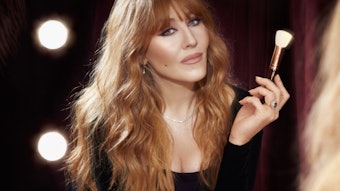
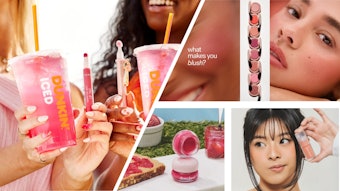

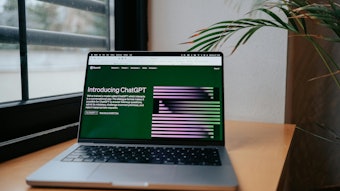

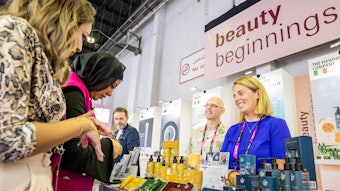

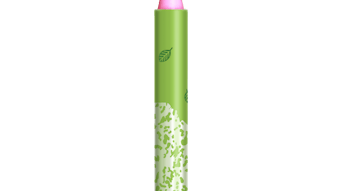
![According to the Personal Care Products Council, 'Between 1990 and 2022, the [U.S.] personal care products industry generated a trade surplus every year, reaching $2.6 billion in 2022...'](https://img.gcimagazine.com/mindful/allured/workspaces/default/uploads/2025/08/adobestock-353393403.MryFiCWzOJ.jpg?auto=format%2Ccompress&fit=crop&h=191&q=70&w=340)
